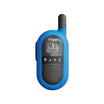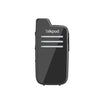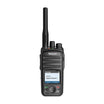Code Division Multiple Access (CDMA) represents a significant advancement in radio communication technology. Unlike traditional radio systems that allocate a specific frequency or time slot for each user, CDMA allows multiple users to share the same frequency band simultaneously. This is achieved by assigning a unique code sequence to each user, enabling multiple conversations to coexist without interfering with one another.
What is CDMA and How Does It Work?
At its core, CDMA is a channel access method used in various radio communication technologies, including cellular networks and satellite communication systems. Each user in a CDMA system is assigned a unique code sequence, which is used to modulate their data. When transmitting, the user's data is multiplied by this code sequence, spreading the signal across a wider frequency band.
The magic of CDMA lies in the properties of the code sequences used, which are designed to be orthogonal to one another. This means that, with the right decoding technique, the receiver can selectively listen to one user's signal while ignoring all others, despite them all sharing the same frequency band. This process, known as 'despreading,' involves correlating the received signal with the intended user's code sequence, effectively filtering out the signals of other users.
Advantages of CDMA in Two-Way Radio Systems
The use of CDMA in two-way radio systems offers several advantages over traditional access methods:
-
Increased Capacity: CDMA can support a large number of users within the same frequency band, making it highly efficient in terms of spectrum usage.
-
Enhanced Privacy and Security: The unique code sequences act as a form of encryption, making it difficult for unauthorized users to intercept or eavesdrop on communications.
-
Improved Signal Quality: CDMA systems are less susceptible to interference and can provide clearer voice quality, especially in challenging environments.
-
Flexibility: CDMA allows for variable data rates and supports a wide range of services, from voice communications to high-speed data transfer.
CDMA in the Real World
In practical applications, CDMA has been widely adopted in cellular networks around the world. In the realm of two-way radios, CDMA technology enhances the performance and capabilities of communication systems, particularly in sectors like public safety, military, and large-scale industrial operations. By employing CDMA, these systems can accommodate more users, provide secure and private communications, and ensure clear voice transmission even in adverse conditions.
Conclusion
Code Division Multiple Access has revolutionized radio communications by providing a scalable, secure, and efficient method for transmitting and receiving signals. Its ability to increase capacity while maintaining high-quality communications makes CDMA an invaluable technology in modern two-way radio systems, underpinning the reliability and effectiveness of critical communication networks across the globe.












































